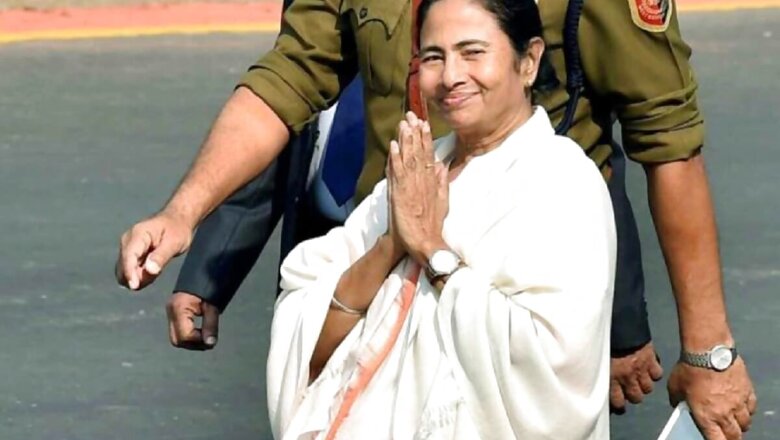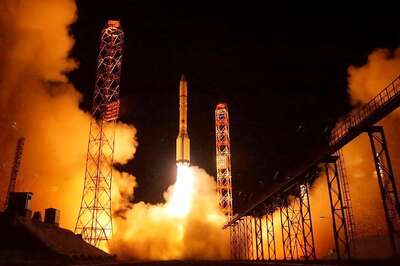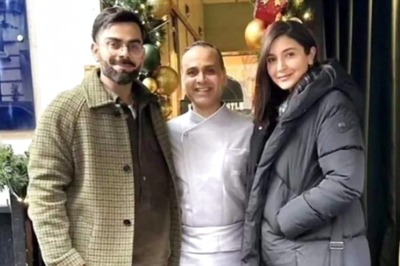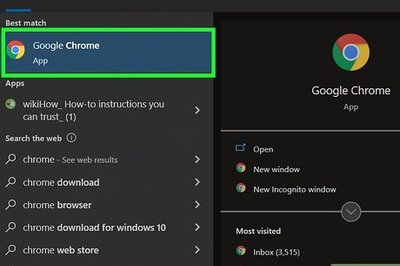
views
On Thursday, March 18, Dr Fuad Halim, the CPM candidate from Kolkata’s Ballygunge Assembly constituency put out a social media post asking for the page number of the section on minorities (read Muslims) in the ruling Trinamool Congress’ election manifesto. Not to mention, the section, once closest to West Bengal Chief Minister Mamata Banerjee’s heart, was absent this year. The percentage of Muslim candidates has also declined. In contrast, candidates from Scheduled Castes exceeded the number of reserved seats.
The omission is part of a tectonic shift in West Bengal’s political narrative that has been revolving around Muslim votes (29 per cent approx.) for the last three decades. The constituency was nurtured by the CPM-led Left Front in the 1990s to counter anti-incumbency; it moved towards Mamata Banerjee’s Trinamool Congress (TMC) in 2011, and Left was out of power. Muslim votes didn’t move alone. The anti-land acquisition movement and deft identity politics saw majority of the Scheduled Caste votes (23 per cent) too leaving for the TMC in 2011. A Maoist rebellion against the former Left Front government brought a sizable portion of tribal votes (5.5 per cent) to the TMC fold.
The design was disrupted by the BJP which won 18 Lok Sabha seats in 2019. Counter play of identity politics and strong inroads in the tribal districts of Junglemahal in South Bengal saw the SC and the ST (Scheduled Tribes) votes moving away to the BJP.
Focus Hindu vote
Theoretically, therefore, the consolidation of SC/ST votes helped the BJP to counterbalance the impact of Muslim votes that still constitute the largest support base of Mamata Banerjee. Most importantly, the focal point of the contest shifted from Muslim votes to Hindu votes.
The shift in focus is all too visible now. The same Mamata Banerjee who didn’t care about the allegations of appeasement politics during the 2019 Lok Sabha elections and indirectly compared the vote bank with milch cow is now waving the ‘more Hindu than the BJP’ card. Her PR managers bombard media with photos of puja at CM’s residence and she tries to recite, often with disastrous consequences, from Hindu religious literature, at public meetings.
ALSO READ| Bengal is Learning a New Language—That of Hindutva-led Caste Identity Politics
As a natural corollary, focus has shifted to the Other Backward Classes or OBCs. No one knows their number in West Bengal. With some 3 million certificates issued since 2011, roughly 13 per cent population would fall under this category so far. On the flipside, many or most of them are Muslims. There has been a visible rush by Mamata Banerjee government to extend Muslims the benefit of job reservation through the OBC quota (17 per cent), after coming to power in 2011. This is now contested by the BJP. A few days ago, BJP president J.P. Nadda promised to include left out Hindus in the OBC list if voted to power. The next day the TMC promised inclusion of four Hindu castes in the OBC job reservation list, in its election manifesto.
A deadly cocktail
It is doubtful if Mamata Banerjee will gain from her sudden and overt display of the Hindutva card. She is primarily facing a serious anti-incumbency, arising out of low-income opportunity, poor law and order, rampant corruption, extortion, and opulent display of new-gotten (read ill-gotten) wealth by party leaders, from panchayat upwards.
The poor are known to offer a cut of 25-30 per cent from the Rs 1 lakh housing assistance under Pradhan Mantri Awas Yojana (PMAY). Up to 50 per cent of the MNREGA payment goes back as cut. Inter-district movement of truck attracts an average of Rs 2000 as cut money. Even Rs 3000 per month job at ICDS centres doesn’t come for free.
The tall talks on investment notwithstanding, the state fares poorly on the industralisation front, as is evident in the low per-capita electricity consumption (757 kWh). Leave alone Odisha (1559 kWh), even Jharkhand (853 kWh) and Sikkim (929 kWh) report better average. Agricultural wage (Rs 250/day in South Bengal and Rs 150/day in North Bengal) is a fraction of what developed states offer. Farm income is pathetically low. Both educated and the uneducated migrate for better opportunities. Kolkata has the lowest share of 18-30 year olds among metros.
The government tries to mitigate the issue either by way of distributing doles or by offering extremely low-paid contractual employment. But this is at best sustenance money and comes with political handles. On the flip side, it fails to mitigate the rising aspirations of the youth. This coupled with her previous “milch cow” avatar, a noticeable spike in communal conflicts, alleged inaction of police, and sustained opposition to or unkind remarks against the popular Narendra Modi government at the Centre, even on issues of national interest, have enraged the majority.
Mamata Banerjee thought the anti-Modi stance will protect her Muslim vote bank and help her stay in power. She ignored the history of the Partition and the sustained flow of Hindus from East Pakistan and Bangladesh. The BJP used this as an opportunity. The results are evident. Over the first five years of her rule, the state witnessed a noticeable rise in population of mosques. During the second term, the number of temples shot up dramatically. Her knee-jerk reaction against chanting of “Jai Shree Ram” made it popular.
Mamata is now facing a deadly cocktail of negative sentiments.
Muslims are unhappy
Poor governance affects everyone. The 66 per cent Muslim-majority Murshidabad district—a major source of construction labour to the country—erupted in protests against the alleged corruption in public distribution (PDS) during lockdown. The 36 per cent Muslim-dominated South 24 Parganas was enraged due to non-supply of relief during cyclone Amphan.
ALSO READ| Will Women Come to the Rescue of Mamata in Bengal Like They Did for Nitish in Bihar?
This election saw a young Muslim preacher, Abbas Siddiqui, who has sufficient hold in the Trinamool bastion of North and South 24 Parganas which together account for 64 of the 294 seats in the Assembly, launching a separate platform. His party will contest in alliance with the Left and the Congress. Siddiqui is tearing apart the Mamata Banerjee government for its failure in governance, pseudo-secularism and using Muslims as a plank to ride to power. His meetings are attracting huge attendance from the Muslim youth as well as the glare of the Trinamool Congress.
Most likely, majority of Muslims will continue to support the TMC due to a lack of option vis-à-vis the BJP. But they are a disgruntled force. More so, after the recent makeover of Mamata Banerjee. The day after release of the party manifesto, a group of Muslim leaders expressed their displeasure to a prominent Trinamool leader.
Can BJP make it?
The ground situation is distinctly in the BJP’s favour. But will it be able to make it? Electioneering is a complex process and more so in West Bengal, which is living under virtually a one-party rule for nearly half-a-century and post-poll atrocities that have come to define the ruling politics.
The wide 5-7 per cent swing required to assume power in Bengal indicates the need for creating sufficient momentum. And, that depends on a well-oiled ground force. The BJP doesn’t have that. By giving tickets to turncoats from the Trinamool and CPM, it is acquiring that mechanism. On the flip side, such a policy, which has little parallel in India, is creating major inner-party unrest. It remains to be seen how the BJP tackles such issues—that’s the only hope for the Trinamool Congress and Mamata Banerjee.
Read all the Latest News, Breaking News and Coronavirus News here




















Comments
0 comment